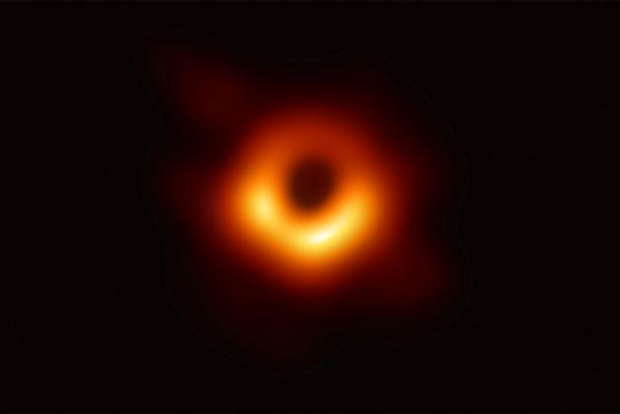Begin typing your search...
Selfies in Space: Capturing an intimate portrait of a black hole
The group has spent the last two years extracting more data from their observations about the polarisation of the radio waves, which can reveal the shape of the magnetic fields in the hot gas swirling around the hole.

Chennai
The Event Horizon Telescope collaboration, an international team of radio astronomers that has been staring down the throat of a giant black hole for years, on Wednesday published what it called the most intimate portrait yet of the forces that give rise to quasars, the luminous fountains of energy that can reach across interstellar and intergalactic space and disrupt the growth of distant galaxies. The black hole in question is a monster 6.5 bn times as massive as the sun, and lies in the center of an enormous elliptical galaxy, Messier 87, about 55 mn light-years away in the constellation Virgo. Two years ago, the team photographed it, producing the first-ever image of a black hole; the hitherto invisible entity, a porthole to eternity. It looked like a fuzzy smoke ring, much as Einstein’s equations had predicted a century ago.
The group has spent the last two years extracting more data from their observations about the polarisation of the radio waves, which can reveal the shape of the magnetic fields in the hot gas swirling around the hole. Now, seen through the radio equivalent of polarised sunglasses, the M87 black hole appears as a finely whiskered vortex, like the spinning fan blades of a jet engine, pumping matter into the black hole and energy outward into space.
“It’s like putting on a pair of polarised sunglasses on a bright sunny day — all of a sudden you can see what’s going on,” said Sheperd Doeleman, an astronomer at the Harvard-Smithsonian Center for Astrophysics and the founding director of the collaboration. “Now we can actually see the patterns of these fields in M87 and begin to study how the black hole is funnelling material to its center,” he said.
Daniel Holz, an astrophysicist at the University of Chicago who was not part of the research, said: “These relativistic jets are some of the most extreme phenomena in nature, combining gravity and hot gas and magnetic fields to produce a beam which crosses an entire galaxy. It is exciting that E.H.T. is helping us learn more about what is going on at the heart of these relativistic jets which originate very near the ‘surface’ of a black hole.” Janna Levin, an astrophysicist at Barnard College of Columbia University who studies black holes but was not part of the Event Horizon team, called the results “thrilling,” as they revealed details about how a black hole can create “a lethal, powerful, astronomical ray gun that extends thousands of light-years.”
The level of detail in the new image, she said, could renew theorists’ interests in features they had given up on ever being able to observe. “A lot of people will be racing back to their pretty calculations, just daydreams in pen on paper, to ask, all excited and nervous, ‘Could the E.H.T. actually see this?’” Dr. Levin said. “I’m going to be one of them.” Black holes are bottomless pits in space-time, where gravity is so powerful that not even light can escape; whatever enters disappears from the universe. The cosmos is littered with black holes. Many are dead stars that have collapsed in on themselves. One sits at the center of almost every galaxy, and is millions or billions of times as massive as any star.
Despite their light-swallowing capability, black holes are the most luminous objects in the universe. Material — gas, dust, shredded stars — that falls into a black hole is heated to millions of degrees as it swirls around the drain of doom in a dense maelstrom of electromagnetic fields. Most of that matter falls into the black hole, but some is pushed out, like toothpaste, by enormous pressures and magnetic fields. How all this energy arises and is marshalled remains unknown to astronomers.
Overbye is a science reporter with NYT©2020
The New York Times
Visit news.dtnext.in to explore our interactive epaper!
Download the DT Next app for more exciting features!
Click here for iOS
Click here for Android
Next Story



